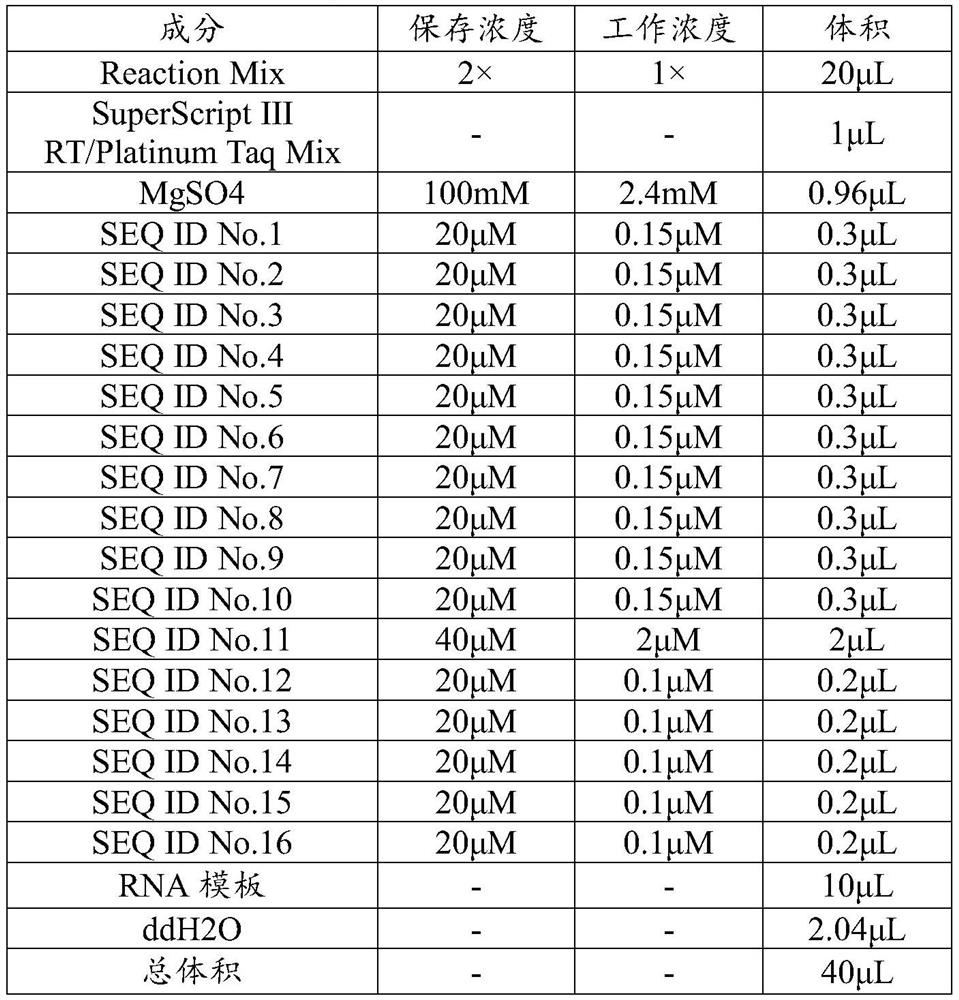Urine nucleic acid maker and detection reagent kit for assisting in early screening of prostatic cancer
A technology for prostate cancer and detection reagents, applied in the fields of molecular biology and medical diagnostics, can solve the problems of interfering with the relative expression level of nucleic acid markers, subtle deviations in the working efficiency of detection systems, and inability to eliminate deviations in detection equipment, and achieve good clinical applications. Prospect, ideal working performance, effect of guaranteed reliability
- Summary
- Abstract
- Description
- Claims
- Application Information
AI Technical Summary
Problems solved by technology
Method used
Image
Examples
Embodiment 1
[0047] Example 1 The detection limit of multiple fluorescent RT-PCR reagents, the operation steps are as follows:
[0048] Sequence synthesis: For transmembrane serine protease 2-ETS transcription factor related genes fusion gene (T2E fusion gene), prostate cancer antigen 3 gene (PCA3 gene) 1, matrix metalloproteinase 2 gene (MMP-2 gene), prostate specific antigen The five genes (PSA gene) and the ETS transcription factor (SPDEF gene) containing the SAM pointing domain are added with T7 promoter sequence and T7 terminator sequence respectively upstream and downstream of the five gene segments. The sequence information is delivered to Shenggong Bioengineering (Shanghai) Co., Ltd. (hereinafter referred to as "Shanghai Shenggong") to synthesize gene fragments de novo and insert the pcDNA3.1(-) plasmid.
[0049] 2. Linear plasmid preparation: According to the restriction enzyme cutting site downstream of the insertion position, the circular pcDNA3.1(-) plasmid is cut into linear plasmi...
Embodiment 2
[0059] Example 2 Multi-gene detection of urine samples assists in the identification of benign and malignant prostate diseases, the operation steps are as follows:
[0060] 1. Sample collection: 30 mL of initial urine of subjects undergoing prostate massage was collected from the clinical laboratory. Sixty urine samples were diagnosed with cancer by fine needle aspiration of the prostate, and 60 urine samples were cancer-excluded.
[0061] 2. Exosomes enrichment: Ultracentrifugation is used to enrich the exosomes in urine samples. The steps are as follows: centrifugation at 300g for 10 minutes to retain the supernatant to remove cell pellets; centrifugation at 2000g for 10 minutes to retain the supernatant to remove dead cell pellets; centrifugation at 10,000g for 30 minutes to retain the supernatant to remove cell debris pellets; centrifuge at 100,000 g for 90 Minutes, remove the supernatant and retain the exosomal pellet; add 15mL PBS buffer, wash and resuspend the exosomal pell...
PUM
 Login to View More
Login to View More Abstract
Description
Claims
Application Information
 Login to View More
Login to View More - R&D
- Intellectual Property
- Life Sciences
- Materials
- Tech Scout
- Unparalleled Data Quality
- Higher Quality Content
- 60% Fewer Hallucinations
Browse by: Latest US Patents, China's latest patents, Technical Efficacy Thesaurus, Application Domain, Technology Topic, Popular Technical Reports.
© 2025 PatSnap. All rights reserved.Legal|Privacy policy|Modern Slavery Act Transparency Statement|Sitemap|About US| Contact US: help@patsnap.com



